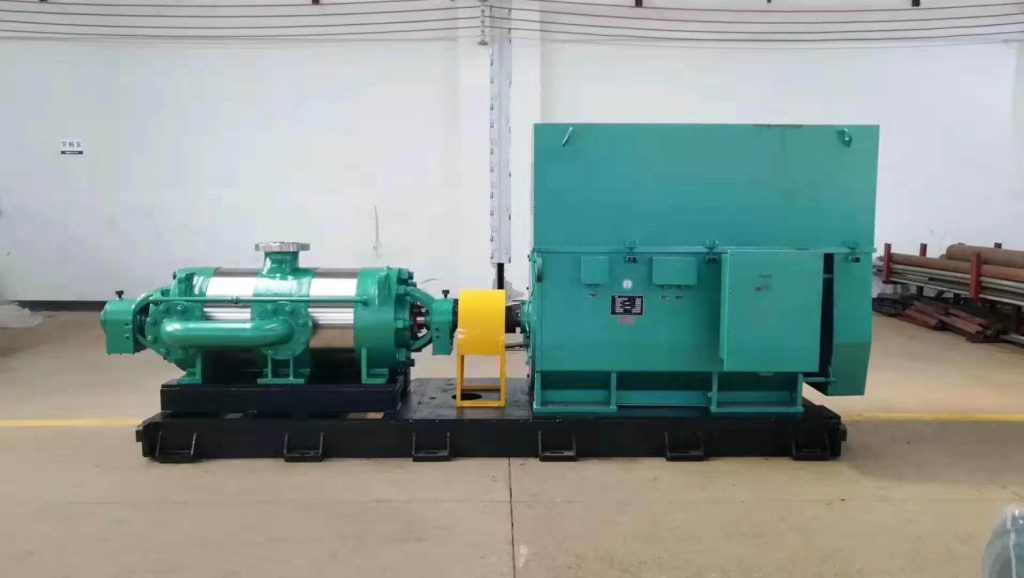Use And Benefits Of Centrifugal Slurry Pump Variable Frequency Drive
Centrifugal pumps are used in numerous applications across various industries, from water supply and irrigation to chemical processing and wastewater treatment. These pumps maintain fluid flow at required levels, ensuring efficient operation and optimum performance. However, traditional methods of controlling pump speed using valves or throttling often result in energy inefficiencies and increased maintenance costs. This is where variable frequency drives come into play as an innovative solution that offers significant advantages to centrifugal pump systems.

Variable Frequency Drive Use
Centrifugal pumps are widely used to transport and manage fluids in various industries. They play a key role in ensuring efficient and reliable operation, but their energy consumption can be a significant concern. A variable frequency drive is an electronic device that regulates a motor’s speed by adjusting the power supply’s frequency. By adjusting these parameters, the operation of the pump can be precisely controlled so that the speed of the pump can be better matched to the system’s requirements. In recent years, variable frequency drives have gained popularity as an effective solution to optimize the performance of centrifugal pumps while reducing energy consumption. The following are the basic steps for using a variable frequency drive for a centrifugal pump:
- Installation and connection: Correctly install the variable frequency drive of the centrifugal pump in place and ensure that it is properly connected to the power supply and the centrifugal pump. Follow the installation guide and connection instructions provided by the manufacturer.
- Setting parameters: Set the appropriate parameters using the keypad or programming interface on the variable frequency drive. These parameters include the pump’s rated power, rated voltage, rated frequency and desired control method. Refer to the variable frequency drive user manual for detailed parameter setting instructions.
- Adjust frequency: Adjust the output frequency of the variable frequency drive to the desired value. By adjusting the frequency, the speed of the centrifugal pump can be controlled. Some variable frequency drives can also provide other control options, such as automatic, remote, or PID control.
- Start and stop: After setting the parameters correctly and adjusting the frequency, you can start the centrifugal pump. Start the centrifugal pump with the start button on the variable frequency drive or via remote control. Likewise, you can stop the centrifugal pump with the corresponding button or remote control.
- Monitoring and adjustment: use the monitoring function provided by the variable frequency drive to monitor the operating status, current, frequency, pressure and other parameters of the centrifugal pump in real-time. As required, parameters can be adjusted to optimize pump performance and energy consumption.
Always refer to the manufacturer’s relevant user manual and operating instructions to ensure the correct and safe use of centrifugal pump variable frequency drives.
Benefits Of Using Variable Frequency Drives
Centrifugal pumps are commonly used in fluid transportation in various industries, such as water supply, wastewater treatment, oil refining, etc. One of the key advances in pump technology has been the integration of variable frequency drives into centrifugal pump systems, with many advantages that can greatly improve the efficiency and performance of these pumps.
- Energy saving: The variable frequency drive can adjust the speed of the centrifugal pump according to actual needs, thereby reducing energy consumption. Traditional centrifugal pumps usually use constant speed drive, which cannot adapt to load changes, resulting in energy waste. The variable frequency drive can automatically adjust the speed of the pump according to the needs to make it run at the best efficiency point, thereby reducing energy consumption and achieving energy-saving effects.
- Precise control: Centrifugal pumps use variable frequency drives to control the pump speed, precisely controlling the flow. This is important for applications requiring accurate flow or pressure regulation, such as water systems, HVAC systems, industrial processes, and more. The variable frequency drive can adjust the speed of the pump according to the actual demand, which can ensure that the pump provides the required flow without the need to achieve it through other methods (such as valve adjustment).
- Pressure Control: The variable frequency drive can adjust the speed of the pump according to the needs to achieve precise pressure control. In many applications, such as water supply systems, irrigation systems and pressurization systems, stable pressure is very important. The variable frequency drive can automatically adjust the speed of the pump according to the pressure change of the pipe network to maintain a constant pressure output.
- Starting control: Traditional fixed-frequency drives apply a large current surge to the motor at startup, which can stress equipment and the grid. The variable frequency drive can start smoothly by gradually accelerating the engine’s speed, reducing the impact at startup, prolonging the life of the equipment and reducing maintenance costs.
- Fault detection and protection: Variable frequency drives usually have advanced fault detection and protection functions, which can monitor the pump’s operating status and provide corresponding alarms or protection measures. For example, it can detect pump overload, overheating, dry running, etc., and take appropriate actions, such as slowing down or shutting down, to protect the equipment from damage.
Using variable frequency drives for centrifugal pumps can generally provide higher energy efficiency, better flow and pressure control, smoother starting process, and more reliable fault detection and protection functions. These advantages make variable frequency drives a common choice in many industrial and commercial applications.
Suppose you want the inverter to protect the motor fully. In that case, you must pay attention to the process and settings, set the parameters correctly, not mindlessly increase the overload factor, etc., and maintain the motor frequently.
Centrifugal pumps with variable frequency drives offer many advantages regarding energy efficiency, precise control and reduced maintenance costs. In addition, the ability to adjust the speed and flow of the pump through a variable frequency drive allows for better control of the system, increasing process efficiency and productivity. Eliminating the need for a mechanical starter helps minimize wear and tear on the motor and other components, extending equipment life and reducing downtime. Considering all these benefits are important to any industry looking for increased performance and cost savings, however, choosing our high quality slurry pumps is wise.
